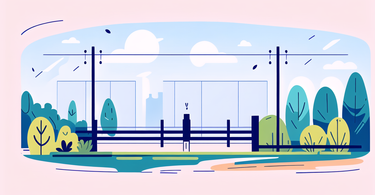Understanding the Importance of Fence Stability
Assessing Fence Lifespan and Durability
Fence stability is crucial for long-lasting and secure property boundaries. A well-built fence can last

for decades, but poor construction can lead to early failure. The lifespan of a fence depends on
several factors, including materials, installation, and maintenance. Wood fences may last 10-15
years, while metal fences can endure for 20-30 years or more. Proper bracing is key to extending a
fence's life. It prevents leaning, warping, and collapse, especially in harsh weather. Regular
inspections can help identify weak spots early, allowing for timely repairs and reinforcement.
The Role of Fence Bracing in Weatherproofing
Fence bracing plays a vital role in weatherproofing your fence. It helps the structure withstand
strong winds, heavy rain, and snow loads. Properly braced fences are less likely to sway or buckle
under pressure. This is especially important in areas prone to severe weather. Bracing also helps
distribute the weight of the fence evenly along its length. This prevents stress concentration at
weak points. By adding stability, bracing reduces the risk of fence panels coming loose or posts
shifting in the ground. It's an essential aspect of fence design that ensures longevity and safety.
Innovative Fence Bracing Solutions for Homeowners
Materials and Technology in Modern Fence Bracing
Modern fence bracing has evolved with new materials and technologies. Traditional wood braces are

still used, but metal options are gaining popularity. Galvanized steel braces offer superior
strength and rust resistance. Some innovative solutions include:
- Adjustable turnbuckle braces for easy tensioning
- Concrete-free anchoring systems for quick installation
- Composite materials that blend strength with weather resistance
- Solar-powered electric fence bracing for added security
High-tech options now include sensors that alert homeowners to fence damage or intrusion attempts.
These advancements make fences more durable and easier to maintain. They also provide additional
features beyond simple boundary marking.
Comparing Different Fence Bracing Methods
There are several methods for bracing fences, each with its own advantages. The choice depends on
fence type, terrain, and local weather conditions. Here's a comparison of common bracing methods:
- Diagonal bracing: Uses a diagonal support from the top of the end post to the bottom of the next post.
- Horizontal bracing: Involves a horizontal rail between posts with a diagonal wire for tension.
- Kicker bracing: Employs a short, angled support from the ground to the fence post.
- H-bracing: Creates an 'H' shape with two posts and a horizontal brace, often with diagonal wire.
- Box bracing: Similar to H-bracing but with braces on both sides of the end post.
Diagonal bracing is effective for most fences. H-bracing is popular for long stretches of fence.
Kicker bracing works well in areas with soft soil. The best method often combines two or more
techniques for maximum stability.
Best Practices for Implementing Fence Bracing
Professional Installation Techniques
Professional fence installers use specific techniques to ensure proper bracing. They start by

setting corner and end posts deeper than line posts. This provides a strong anchor for the entire
fence. Pros often use concrete to set these critical posts. They ensure braces are installed at the
correct angle, usually 45 degrees for diagonal braces. For H-braces, they maintain a level
horizontal brace and proper tension on the diagonal wire. Professionals also consider soil type and
local building codes when choosing bracing methods. They use high-quality materials and ensure all
connections are secure. Proper tools and equipment, like post-hole diggers and levels, are essential
for accurate installation.
Maintenance and Upkeep for Fence Longevity
Regular maintenance is key to extending the life of a braced fence. Here are some tips for proper
upkeep:
- Inspect your fence regularly, especially after severe weather
- Tighten loose bolts and replace rusted hardware
- Re-tension diagonal wires on H-braces as needed
- Apply wood preservative to wooden braces annually
- Clear vegetation away from the fence line to prevent moisture buildup
- Address any signs of post movement or leaning promptly
- Repaint or restain wooden fences every few years to protect from weathering
- Check for and repair any damage to concrete footings around posts
By following these maintenance practices, you can significantly extend your fence's lifespan.
Regular care prevents small issues from becoming major problems. It also helps maintain the
appearance and functionality of your fence. Remember, a well-maintained fence not only looks better
but also provides better security and property value.
